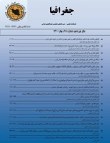Studying of Feasibility of strategic Alliance between the Countries and Groups of the Axis of Resistance
The Middle East as one of the most important and strategic regions of the world, after the end of World War II and throughout the Cold War, one of the main areas of conflict and rivalry between the two superpowers. The United States and the Soviet Union. In the meantime, although the Soviet Union, with one or two few footholds in the region, did not play a significant role in the region's processes and relations, much of this vast and important region was the field of activity and power mapping. Western countries, especially the United States, were completely under the control and influence of this world power and had a relatively integrated structure within the framework of the goals and policies of this country. With the outbreak of the Islamic Revolution in Iran in 1978 (1979 AD), the first major blow was dealt to the integrated and uniform structure of the region and it faced a major instability and rift. The Islamic Revolution in Iran, in addition to its internal effects, left far-reaching results and consequences among the nations and countries of the region, and the source and inspiration of popular movements and the emergence of anti-American and Western currents and movements of Islamic nature in Became countries of the region. Expansion of popular movements inspired by Islamic teachings and especially influenced by the Islamic Revolution of Iran, the ground for the rise of the above currents and movements in countries such as Afghanistan, Pakistan, Iraq, Syria, Palestine and Lebanon were provided and in fact a definite alignment emerged between the countries of the region and the spatial construction of the region became de-polar in nature. In this regard, several other events such as the eight-year Iran-Iraq war, the collapse of the Soviet Union, the events of September 11, the US invasion of the region and the occupation of Afghanistan and Iraq, the fall of Saddam Hussein's government in Iraq and finally Popular uprisings in the Islamic countries of North Africa spread to some Middle Eastern countries, such as Syria, Bahrain, Yemen, and Jordan, and eventually the military conflict between the Palestinian and Lebanese jihadist groups and the Israeli government and other similar incidents became more prominent. Political and economic alignments led among the countries of the region and practically divided the countries and movements in the region into two groups and specific fronts of resistance and surrender. The Islamic Republic of Iran as the main center of this front, was located along with countries such as Syria, Iraq, Lebanon, and Palestinian and Yemeni jihadist groups, which converged on axes such as common threats and views and had achieved relative unity, in the opposite row, the group of countries on the southern shores of the Persian Gulf with the government of Israel, which, relying on Western powers and large arms purchases, are trying to confront the countries of the resistance front.
The present study is among the theoretical and future research and in terms of purpose, it is part of applied research and problem solving that is in a descriptive-analytical form and using methods. Quantitatively and qualitatively, adjusted and compiled. How to collect data in two methods library and documentary and also by designing a questionnaire of 20 questions from the table of strengths, weaknesses and opportunities and threats of the SWOT analytical model and available to research samples selected by purposive sampling method Have been located. The research sample includes 30 experts in political geography, political science and Middle East studies who provided with a questionnaire by Delphi method and elite interviews. Then, the results obtained from the experts' answers reviewed and then the components of opportunity, threat, strength and weakness normalized separately. The weight scores of each obtained by normalizing the four components, and finally the sum of the weight scores is calculated. Thus, the number 2.56 obtained for the components of opportunity and threat and the number 2.49 obtained for the components of strength and weakness, which indicates that it is very close to the average number (2.5). In the following, 20 strategies have been extracted from the components, 9 of which have been prioritized with high scores. The TOPSIS method has also used to prioritize strategies.
As the developments in the Arab world became more complex and popular uprisings spread to most of the Middle Eastern countries, the increasing competition of powers for the intellectual and operational orientation of these developments began. In the meantime, a group of countries and groups called the Axis of Resistance activated to consolidate and increase their own geostrategic and ideological depth in the Middle East. Although the background of a number of actors in the axis of resistance dates back to the beginning of the Islamic Revolution in Iran, but the field developments in Iraq, Syria and then Yemen, added to the multi-layered nature of this axis and attracted new activists.
The research findings show that the sum of the weighted scores obtained indicates that the factors influencing the formation or non-formation of the resistance-based union are neither too strong nor too weak. It is in the middle position. In addition, the final number obtained is 2.56, which indicates that the idea of forming a resistance-based union is strong. On the other hand, the sum of weighted scores also indicates that the situation of countries and groups based on resistance is in average conditions and the probability of forming a union based on resistance is moderate. To increase the likelihood of the formation of a regional union of the axis of resistance have proposed 20 strategies based on the principle of complementarity and interdependence.
- حق عضویت دریافتی صرف حمایت از نشریات عضو و نگهداری، تکمیل و توسعه مگیران میشود.
- پرداخت حق اشتراک و دانلود مقالات اجازه بازنشر آن در سایر رسانههای چاپی و دیجیتال را به کاربر نمیدهد.



